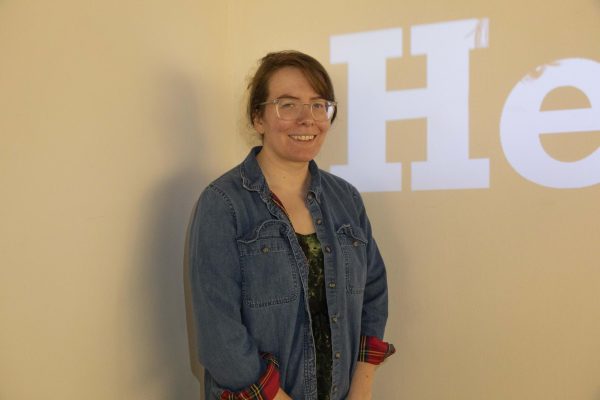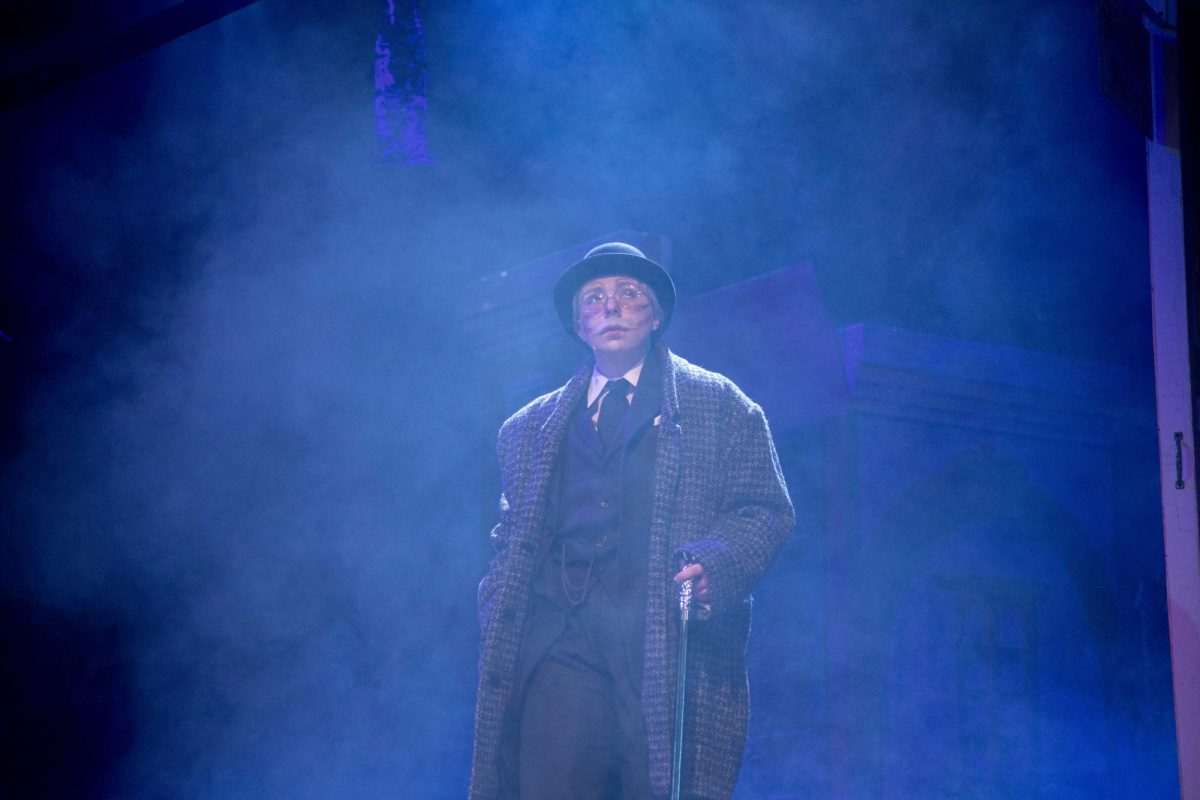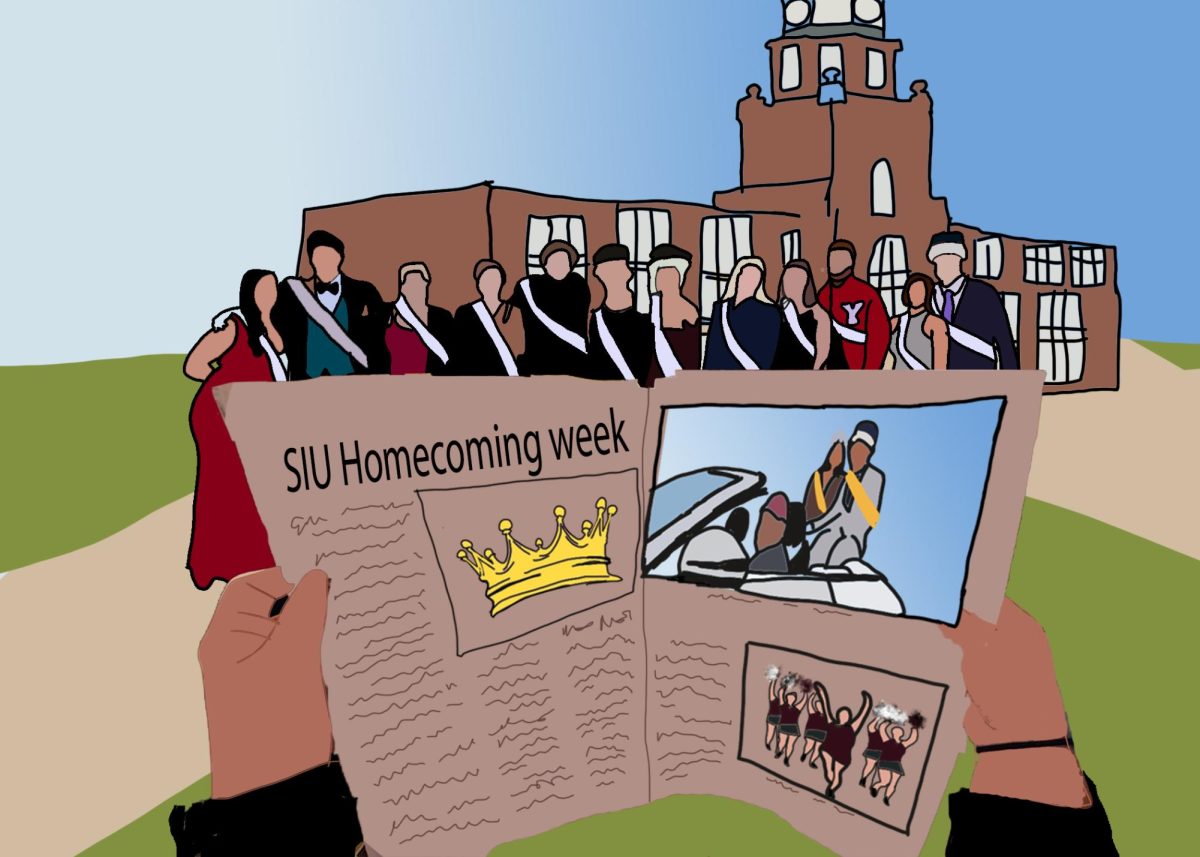The Sharp Museum will be hosting an exhibition to bring visibility to creative women in the area and allow them to share their experiences.
Teresa Fix, the guest curator of the exhibit, introduced the concept in 2020 as a way for artists to express themselves through unprecedented times. It has run annually since 2022.
“I had been painting everyday as a need to express all of the emotions I was feeling from the craziness of what was happening in our country with politics, climate, immigration and division,” Fix said.
Advertisement
The Sharp Museum’s exhibition “Women’s Voices 4: Pushing Boundaries” will be on display from now to May 10. The exhibit will be located in the museum’s South Hall in the West Gallery.
The ongoing series has featured unique exhibits spotlighting the expressive thoughts and current prospectives of individual women in southern Illinois. This year, 27 pieces will be on display, each from a different artist.
Fix said, “Each year we ask for women artists (or those who identify as female) to submit one piece for the exhibition. I’m very proud of how fruitful the idea of a community exhibition of women’s art has become, and how it continues to grow, now in the fourth year.”
Over the years, she has continued to be involved in the arts and with downstate area artists, and wanted to traverse this sort of exhibition, bringing fundamental elements of women’s art and their creative endeavors to the university’s museum.
Fix had also discovered many of her artist-friends were experiencing the same sort of powerful feelings, and found they were able to use their media to to be heard, since words alone are sometimes just not enough.
“One day in 2019, I saw a ‘Call for Arts’ that the museum curator, Wes Stoerger had posted in the newspaper. I called Wes and ran my idea of doing an exhibit where each woman artist could show their piece using this premise,” Fix said.
The exhibition has now acquired a reputation as an unprecedented annual event. Stoerger and Fix come together each year to rework the event to create new experiences for the public. They have a Call for Art around July with a cut-off date in the fall, keeping the title, “Women’s Voices”, while changing the theme.
Advertisement*
Storeger said, “Each year’s exhibit is different. We don’t try to keep selecting the same artists every time. There is some overlap from exhibit to exhibit, but we try and showcase different people in each show, which means each one is a pretty unique experience from the beginning to the end.”
It was important to them that artists were specifically from the southern Illinois area.
“We set up a geographical perimeter of about an hour and a half around here. We just had to pick what southern Illinois meant to us, and that seemed like a reasonable time and distance for people to be able to come to the gallery to view their work,” Storeger said.
The exhibition has expanded to include events such as monthly Saturday “Artist Talks”, where individual artists may use the opportunity to discuss their work, support each other and network under the umbrella of being a Women’s Voices artist.
Fix said, “I’m happy to say it seemingly comes together every year organically, each year taking on a different and individual flavor of sorts. For the viewer it serves as an enlightenment to current events and for the artists, gives a voice as we try and make sense of ourselves in our changing world.”
This was the first time a juror was used. Mel Watson chose 26 pieces out of the total 63 submissions. She herself is in the show as an Invitational Artist.
“We have so many amazing women who are creating all sorts of contributions ranging from their own personal hobbies, to studio artists galore who sell the art they make locally and travel to markets and festivals all over the country supporting not only themselves but downstate tourism,” Fix said.
According to Storeger, when people think of an exhibit at the museum, they often think of professional artists that have had years of experience and potentially an MFA (Master of Fine Arts degree). But that is not necessarily the case for all the artists who participate in Women’s Voices.
“Some of these artists do have professional art training, but a lot of them found their way to art pretty naturally. It just showcases the raw talent that’s here, and hopefully encourages other people to pursue passions and things that might be a little bit outside of their comfort zone. They might find that they have a talent they didn’t know that existed,” Storeger said.
Sarah-Anne Winchester is one of the artists whose piece was accepted into the exhibition. As a graduate assistant at the museum, she has gotten to see some of the behind the scenes action during the process of putting together the exhibits.
“I have heard stories from the artists about how this is their first show, a new medium or new idea for them, that they want to connect with more artists in the area, that they are so nervous about their work being good enough a ‘real show,’ or they don’t consider themselves artists,” Winchester said.
This show brings together the local community and gives a boost of confidence to many of these artists.
“I feel lucky to be a part of such a diverse group, and I can help by figuratively and literally, since I do the gallery lighting, shining a light on the talent in the area that is often overlooked,” Winchester said.
Her piece is a video about her experiences with past relationships and the emotions she felt at the time of these events.
“In past relationships, I felt like I had removed parts of myself to be palatable to the other person. Sometimes, it was the expectations of my partner at the time, and other times, it was society’s expectations about what makes a ‘good girlfriend,’ Winchester said.
The act of removing armpit hair, which is regarded as a normal thing for a male to have, but is typically seen as “dirty” or “disgusting” on a female, represents her feelings about societal expectations and how they impact relationships.
“I presented a male figure (His) and then a shaved female figure (Hers) to showcase the different standards, and then the violent removal of the hair with tweezers (Ours). The viewer sees this as the removal of self to fit the standards being forced on them,” Winchester said.
At the end of the film, the female lightly caresses the armpit and leaves it as it is. It becomes a part of accepting oneself without conditions (Mine).
The construction of this piece helped Winchester to work through her personal conflicts and she is now in a happy and healthy relationship where she does not feel the need to minimize herself. It also allows her to share these experiences with the public, who can relate to the piece themselves or can realize the impacts of the expectations presented in the video.
Winchester said, “It’s a ton of work, but it’s so rewarding to see everyone’s excitement at drop off, the reception and as the show is up and people are coming to see friends and family shine in the spotlight.”
Jordan Faye Bardgett, a student in the School of Media Arts at SIU, said, “It excites me to share my work with the local community surrounding SIU.”
Bardgett also has a piece that was accepted into the 2024 exhibit.
“The theme of pushing boundaries within an artistic space occupied by women means a lot to me as a trans-feminine artist. Pushing the boundaries of what women can do and what even makes a woman are things I live with and examine every day,” Bardgett said.
Bardgett’s artwork is reflective of her personal experiences and the identities of trans women everywhere.
She said, “My piece is titled ‘Transistor’ which is a play on words; transistor as in a semiconductor that affects changes in signal voltage, and also a trans sister, as in a trans woman with two older brothers like me.
To make the piece, she combined both the electrical diagram image and transgender symbol. The image file of this visual was then converted into sound through using a digital audio workstation where sound effects were added before converting the file back into an image.
“This data-bending reflects the transformative properties of both gender and societal perceptions of gender,” Bardgett said.
She will be giving an artist talk to discuss her work more, along with Suzann Starchild Shepard, who also has work in the Women’s Voices 4 Exhibition. Their talk will take place April 6 from 2:00 p.m. to 4:00 p.m. at the Sharp Museum.
Bardgett said, “If you’re looking to grow as an artist, keep an eye out for open calls for work from galleries, museums and journals. That’s what truly gets your work out there. Don’t fear rejection.”
“The first year’s exhibit I found myself begging a woman I knew who I had known to do so many special creations over the years,” Fix said. “One of her many designs was an armadillo puppet. The creation was fabulous but seeing it in action, the head and arms moving, was pure joy and amazement.”
The artist had recently been working on puppets for the Carbondale Puppet Parade reusing & recycling materials, showing an awareness for the children’s safety by using tempera paints and non-toxic materials.
Puppets are one of many other mediums that have been chosen and explored for this exhibit, each with unique meanings and interpretations.
Fix said, “There are paintings that the viewer must look at deeply with an open mind. What one might see as colored sea glass might actually be a pile of plastic bottles washed up along the shoreline. And why are there teeth floating in the sky? Perhaps to give a feeling of uncomfortableness?”
The mediums range from collages, to not only paper, but also a leather two-sided quilt sewn with intention using antique buttons to allow the viewer to also interact with the artwork by exploring and touching the different elements. Pieces from a textile weaver who dyes her own yarn from vegetables she grows were also included.
“She enjoys the mathematical elements of the patterns she’s producing on the loom, making a 25-foot-long piece of colorful art for only her need to create,” Fix said.
The artists’ need to create leads to emotional scenes to get through times of grief or disconnection.
A dresser drawer diorama depicting the death of a child using words sewn into the pieces of clothing, has the potential to invoke sorrow and allow them to work though their own grief knowinging they are not alone.
Fix said, “These, and others alike, are the women I find so interesting and want to put in an exhibit. These are the voices. These are women creating to be heard.”
Updates for the reception, or general information about the exhibition and the series of artists talks can be found on the museum’s official website or Facebook page.

Advertisement






















